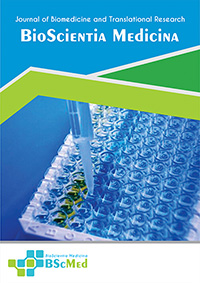Main Article Content
Abstract
Background: Intracranial meningiomas are common primary central nervous system tumors, mostly benign, yet recurrence remains a significant clinical challenge influencing patient prognosis. Understanding the characteristics and determinants of recurrence, particularly in specific populations, is crucial. Data on recurrent meningioma from developing countries like Indonesia are limited. This study aimed to describe the clinicopathological features and surgical management experience of recurrent intracranial meningiomas over a 10-year period at a tertiary referral hospital in Bandung, Indonesia.
Methods: A retrospective analysis was conducted on all adult patients (≥18 years) surgically treated for recurrent intracranial meningioma at the Department of Neurosurgery, Dr. Hasan Sadikin General Hospital, Bandung, between January 2012 and December 2022. Patients with incomplete records were excluded. Data collected included demographics, clinical presentation, radiological findings (tumor location, bone infiltration, tumor invasion), surgical history (number of resections, time to recurrence), and histopathological results. Descriptive statistics were used for analysis.
Results: Twenty-eight patients met the inclusion criteria. The cohort was predominantly female (n=24, 85.7%) with a median age of 46 years (range 26-67). The most common presenting symptoms were protrusion (n=11, 39.3%) and headache (n=7, 25.0%). Tumors were most frequently located in the parietal (n=10, 35.7%) and sphenoorbital (n=9, 32.1%) regions. Significant bone infiltration was observed in 75.0% (n=21) of cases. Tumor invasion into adjacent structures occurred in 21.4% (n=6), most commonly involving the cavernous sinus (n=2, 7.1% of total / 33.3% of invaded). The median time to recurrence detection was 36 months (range 6-144). Most patients (n=22, 78.6%) underwent two tumor removal surgeries during the study period. Based on available histopathology (n=17), meningothelial (n=10, 35.7% of total / 58.8% of available) and transitional (n=3, 10.7% of total / 17.6% of available) subtypes were the most common WHO Grade 1 diagnoses. One case each of atypical (Grade 2) and malignant (Grade 3) meningioma were identified.
Conclusion: Recurrent intracranial meningiomas predominantly affected middle-aged females, often presenting with symptoms related to mass effect in parietal and sphenoorbital locations. High rates of bone infiltration and significant tumor invasion, particularly involving the cavernous sinus, were characteristic features. Recurrence was typically diagnosed within 3 years, with meningothelial and transitional subtypes being the most frequent histologies observed in this recurrent group. These findings underscore the complex nature of meningioma recurrence and highlight the need for tailored management strategies and long-term surveillance, particularly in cases with high-risk features like bone and sinus invasion.
Keywords
Article Details
As our aim is to disseminate original research article, hence the publishing right is a necessary one. The publishing right is needed in order to reach the agreement between the author and publisher. As the journal is fully open access, the authors will sign an exclusive license agreement.
The authors have the right to:
- Share their article in the same ways permitted to third parties under the relevant user license.
- Retain copyright, patent, trademark and other intellectual property rights including research data.
- Proper attribution and credit for the published work.
For the open access article, the publisher is granted to the following right.
- The non-exclusive right to publish the article and grant right to others.
- For the published article, the publisher applied for the Creative Commons Attribution-NonCommercial-ShareAlike 4.0 International License.





